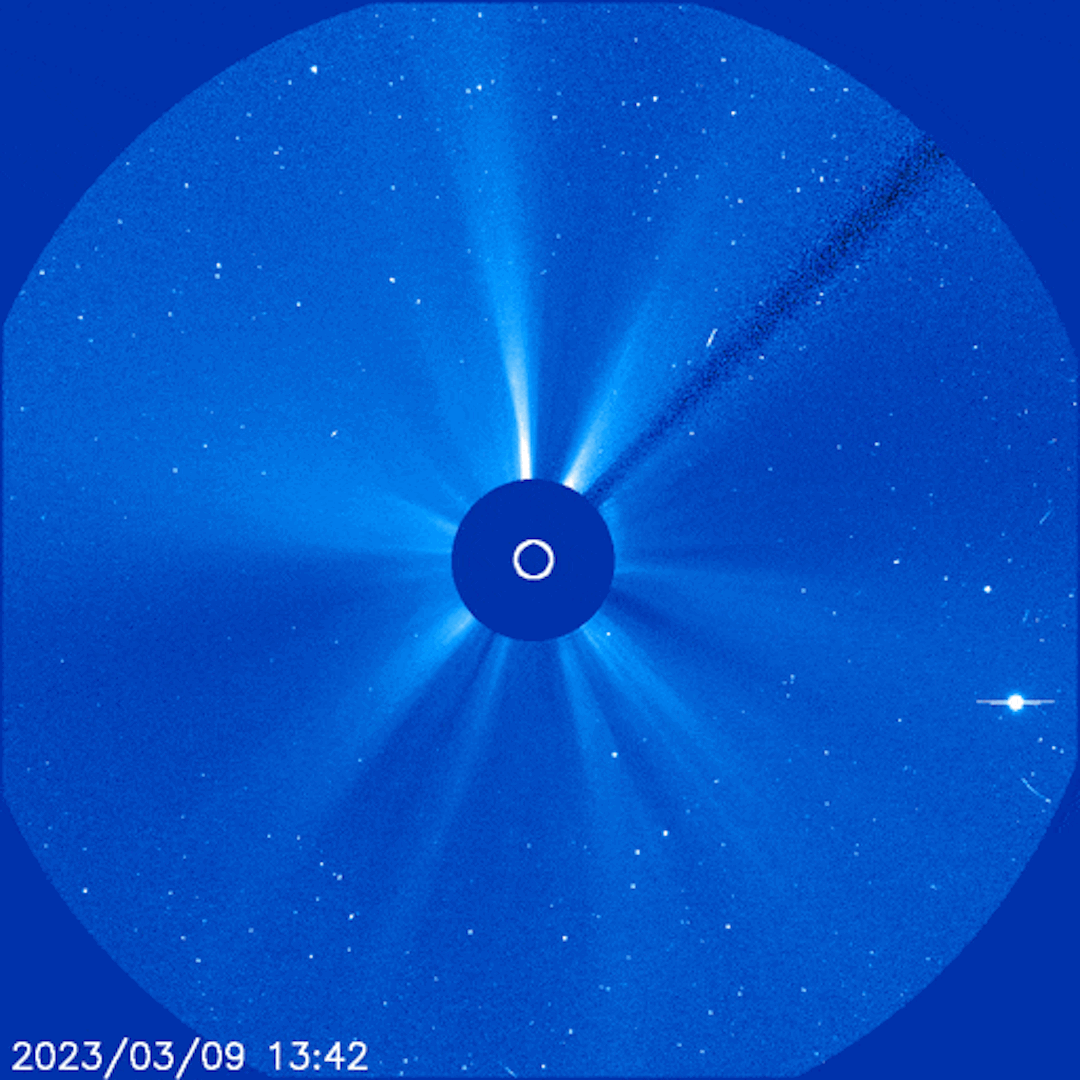A charming “butterfly” flew out of the Sun, unfolding its ethereal wings in two arcs of plasma, ejected by a powerful eruption on the sides. A stunning coronal mass ejection on the Sun occurred on March 10, Spaceweather reported.

“Most coronal mass ejections look like a smoke ring or halo. But this was different. We would never know what kind of explosion caused its insect–like shape, because it happened on the opposite side of the Sun,” Spaceweather said in a statement.
Coronal mass ejections originate from sunspots – areas on the Sun where powerful magnetic fields created by the flow of electric charges form nodes before a sharp explosive rupture. As a result of this process, energy is released and giant plumes of solar material are ejected from the surface of the star into the Solar System. Charged particles form the solar wind, rushing through space-time at a speed of millions of km/h.

Scientists reassure: this coronal mass ejection will not hit the Earth. According to NASA, Mercury will take a solar strike. As soon as the solar wind hits the planet closest to the Sun, the ejection could potentially break through Mercury’s weak magnetic field and sweep away part of the planet’s surface, forming something like a comet tail. The remaining parts of this blurred and raised material will hang over Mercury for a short time, “giving” a temporary atmosphere to the small planet.
Detrimental effect of solar storms on the Earth
This time the storm will pass by our planet. But such powerful solar winds can cause spectacular geomagnetic storms. During these storms, the Earth’s magnetic field contracts slightly under waves of high-energy particles. These particles seep down the magnetic field lines near the poles and excite molecules in the atmosphere, releasing energy in the form of light to create colorful glows in the upper atmosphere, known as the aurora borealis. More intense geomagnetic storms can disrupt the magnetic field of our planet so much that they can harm satellites, and in extreme cases even paralyze the Internet and power systems.
The largest solar storm in recent history was the Carrington event of 1859, which released about as much energy as 10 billion atomic bombs. Hitting the Earth, a powerful stream of solar particles disabled telegraph systems around the world and caused auroras brighter than the light of the full moon, stretching far south, all the way to the Caribbean Sea. Scientists warn that if such an event happened today, it would cause trillions of dollars in damage, with massive power outages and put thousands of people’s lives at risk.
Earlier we reported on how a strange phenomenon occurred on the Sun for the first time, which did not explain.
Follow us on Twitter to get the most interesting space news in time
https://twitter.com/ust_magazine
